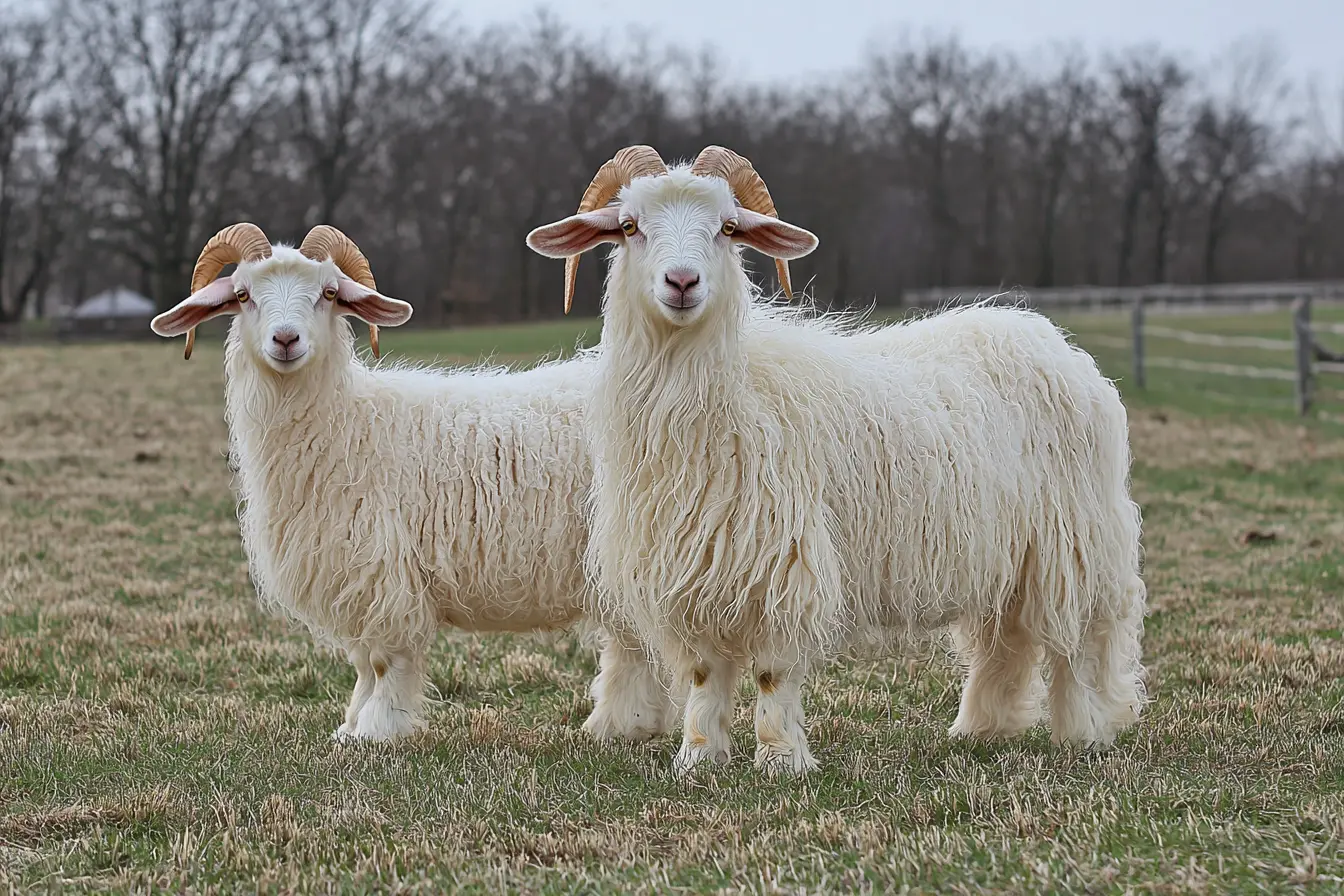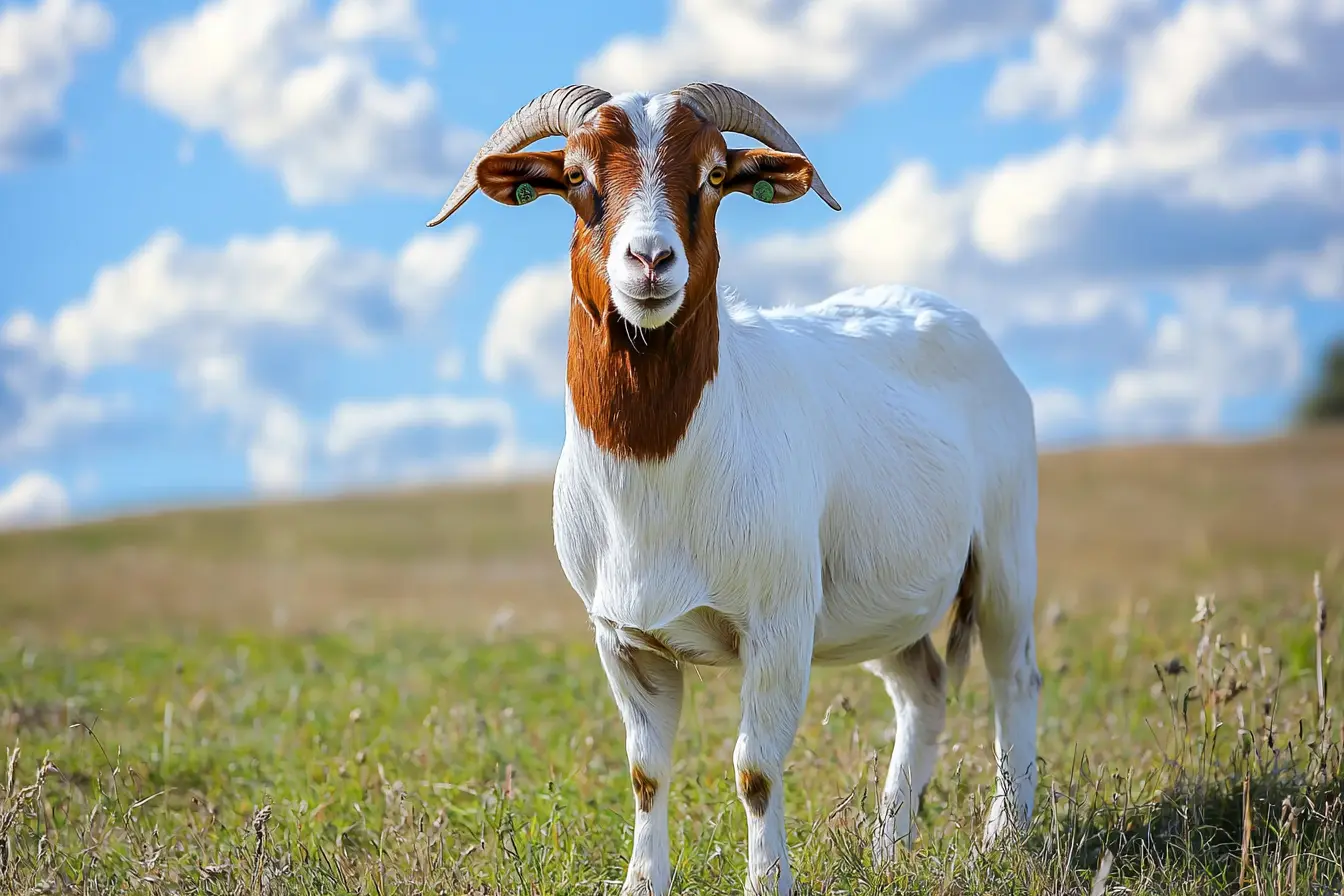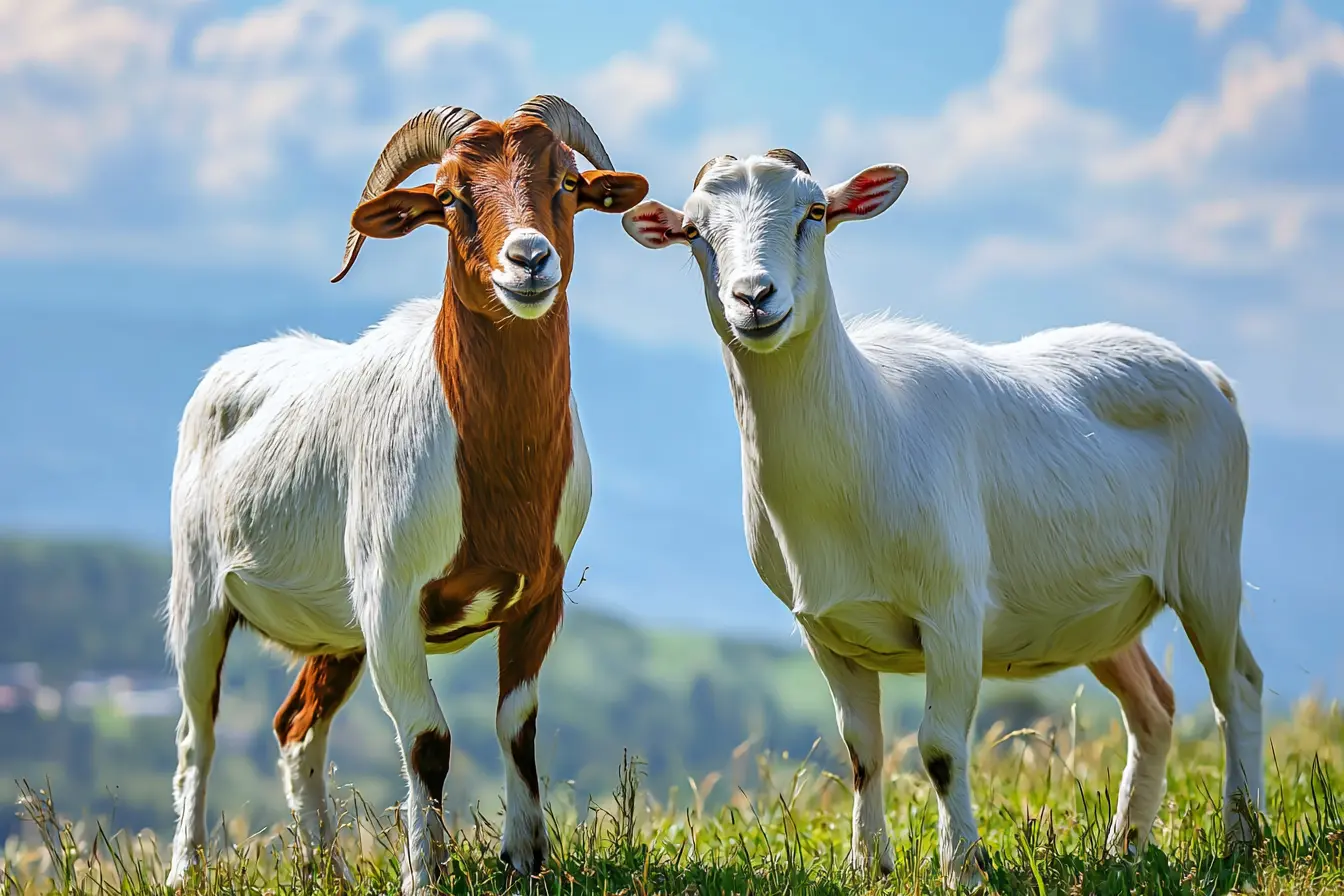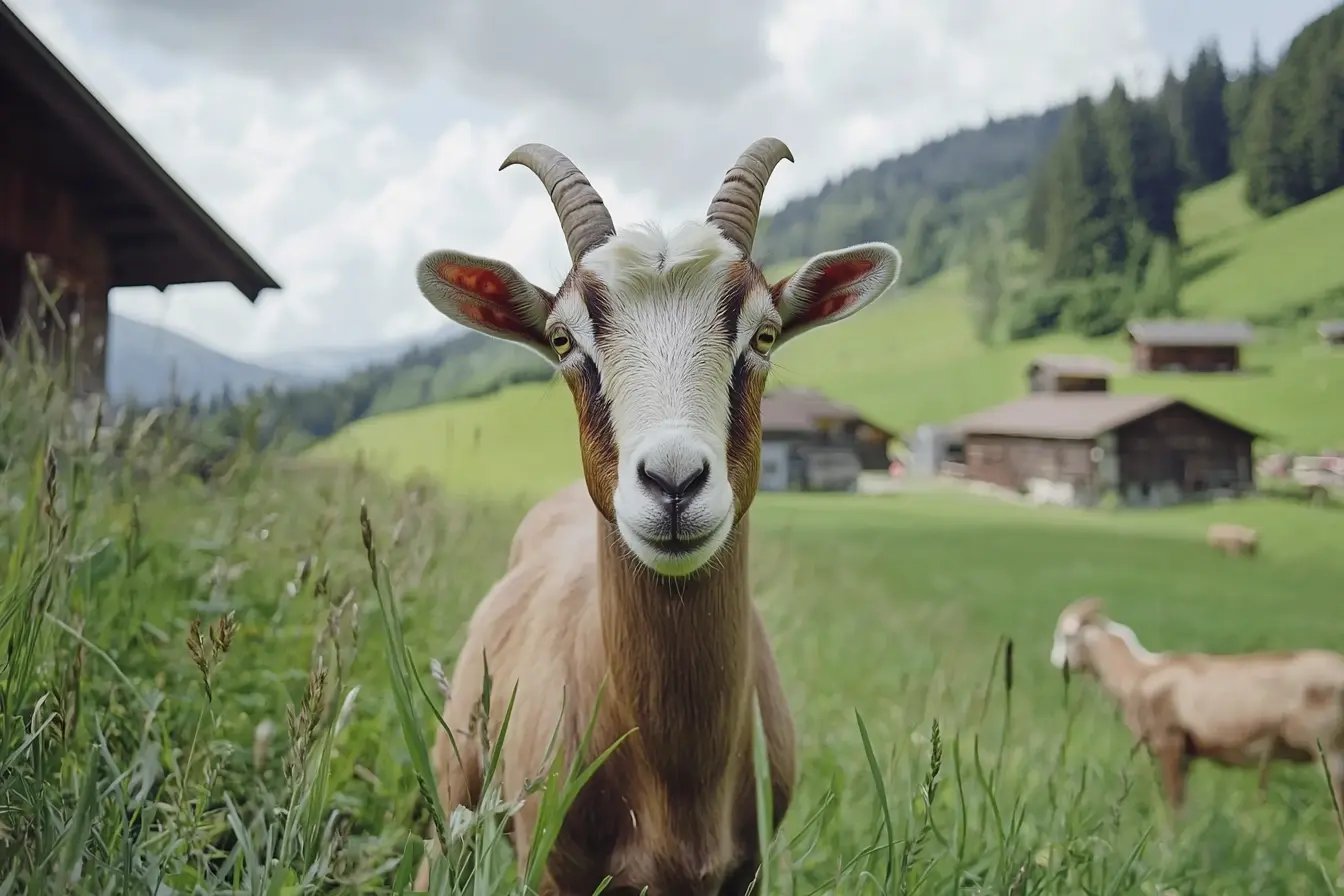
A Complete Guide to Caring for Angora Goats
Angora goats are a unique and valuable breed, best known for their production of mohair – a luxurious, soft fibre that is highly sought after in the textile industry. Originating from Turkey, these goats are now kept by farmers and smallholders worldwide, including in the UK, for their fibre and gentle temperament.
If you’re considering keeping Angora goats, this guide will provide you with everything you need to know about caring for this breed, including housing, feeding, health care, shearing, and breeding.
A Brief History of Angora Goats
The Angora goat breed originated in the Ankara region of Turkey, where they have been bred for their mohair fibre for thousands of years. The name "Angora" is derived from the historical name of Ankara. These goats were first introduced to Europe in the 16th century and later brought to the UK, where they are now a popular choice for fibre production.
Mohair from Angora goats is prized for its softness, strength, and shine, making it ideal for producing high-quality garments such as scarves, jumpers, and blankets.
Key Characteristics of Angora Goats
Angora goats have several distinctive traits that set them apart from other goat breeds.
- Size: Medium-sized. Adult females (does) weigh around 35-50kg, while males (bucks) can weigh up to 60-80kg.
- Coat: Long, curly fleece known as mohair. The fleece grows continuously and needs to be sheared twice a year.
- Ears: Long, pendulous ears that hang down on either side of their head.
- Temperament: Generally docile and gentle, making them easy to handle.
- Fibre Production: Each goat produces around 3-6kg of mohair annually, depending on the animal’s age and condition.
Housing for Angora Goats
Providing proper housing is essential to keep your Angora goats comfortable and protected from the elements. Their long fleece offers some protection from the weather, but they are more vulnerable to cold and wet conditions compared to other breeds.
Shelter Requirements
- Size: Ensure the shelter is spacious enough to accommodate your goats comfortably. A minimum of 1.5 square metres per goat is recommended.
- Ventilation: The shelter should be well-ventilated to prevent respiratory issues but free from draughts to keep the goats warm in colder weather.
- Bedding: Use straw or wood shavings as bedding and replace it regularly to maintain cleanliness.
Fencing
- Secure Fencing: Angora goats are not as agile as some other breeds, but they are still curious and can escape if the fencing is inadequate. Use fencing that is at least 1.2 metres high.
- Grazing Areas: Provide access to secure grazing areas where your goats can browse for shrubs, weeds, and grasses. Rotating pastures helps maintain healthy grazing areas and reduces the risk of parasite infestations.
Feeding Angora Goats
A balanced diet is essential for keeping your Angora goats healthy and ensuring high-quality mohair production.
Diet
- Hay and Forage: The majority of an Angora goat’s diet should consist of good-quality hay or forage. This provides the fibre they need to maintain a healthy digestive system.
- Concentrates: Supplement their diet with goat-specific concentrates, especially during pregnancy, lactation, or the winter months when forage may be limited.
- Fresh Vegetables and Fruits: You can offer fresh vegetables and fruits as treats, but avoid toxic plants such as potatoes, rhubarb, and avocado.
Water
- Ensure your goats have constant access to fresh, clean water. Proper hydration is essential for overall health and fibre production.
Mineral Supplements
- Provide a mineral block or loose minerals specifically formulated for goats. Angora goats need essential minerals like calcium, phosphorus, and selenium to maintain health and produce high-quality mohair.
Shearing Angora Goats
One of the most important aspects of caring for Angora goats is shearing their fleece.
Shearing Schedule
- Angora goats need to be sheared twice a year, typically in the spring and autumn.
- Each shearing session yields around 1.5-3kg of mohair per goat, depending on the animal’s size and condition.
Tips for Shearing
- Use professional shearing equipment or hire an experienced shearer.
- Ensure the goats are calm and well-handled before shearing to reduce stress.
- After shearing, check the goats for any cuts or injuries and treat them accordingly.
Fleece Care
- The mohair should be cleaned and sorted after shearing to remove any debris or coarse fibres.
- Store the fleece in a clean, dry place to prevent damage from moisture or pests.
Health Care for Angora Goats
Regular health checks and preventative care are essential to keep your Angora goats healthy and productive.
Vaccinations
Work with your vet to establish a vaccination schedule for your goats. Core vaccinations typically include protection against:
- Clostridial diseases (e.g., tetanus, enterotoxaemia)
- Pasteurellosis
Deworming
Angora goats are susceptible to internal parasites, so regular deworming is necessary. Use faecal egg counts to determine the parasite burden and avoid overusing dewormers to prevent resistance.
Hoof Care
- Trimming: Angora goats’ hooves need regular trimming to prevent overgrowth and lameness. Check their hooves every 4-6 weeks.
- Foot Rot Prevention: Keep their shelter and grazing areas dry to reduce the risk of foot rot.
Common Health Issues
- Lice and Mites: Angora goats are more prone to lice and mites due to their dense fleece. Regularly check your goats and treat them with appropriate medications if necessary.
- Fleece Rot: Ensure your goats are kept dry to prevent fleece rot, a condition that occurs when the fleece stays damp for extended periods.
Breeding Angora Goats
Angora goats are typically bred for both fibre production and meat.
Breeding Tips
- Age to Breed: Does can be bred from around 8-12 months of age once they have reached at least 60% of their adult weight.
- Gestation Period: The gestation period for goats is approximately 150 days (5 months).
- Kidding: Provide a clean, warm kidding area for the doe to give birth. Angora does are generally good mothers and produce 1-2 kids per litter.
Behaviour and Handling
Angora goats are known for their gentle and docile temperament, making them easy to handle.
- Calm Approach: Approach your goats calmly to avoid startling them. They enjoy human interaction and can form bonds with their handlers.
- Positive Reinforcement: Use treats to build trust and encourage cooperation during handling and shearing.
- Training: Goats are intelligent animals and can be trained to follow basic commands.
Why Choose Angora Goats?
There are several reasons why Angora goats are a popular choice for both smallholders and commercial farmers:
- Mohair Production: Angora goats produce high-quality mohair, a valuable and sought-after fibre in the textile industry.
- Hardy and Adaptable: They can thrive in various climates, although they prefer temperate weather with adequate shelter.
- Friendly Temperament: Their gentle nature makes them easy to handle, even for beginners.
- Dual Purpose: In addition to fibre production, Angora goats can also be raised for meat.
Final Thoughts
Angora goats are an excellent choice for goat owners interested in fibre production. Their unique appearance, gentle temperament, and valuable mohair make them a rewarding breed to keep. By providing proper housing, a balanced diet, regular health care, and timely shearing, you can ensure your Angora goats thrive and produce high-quality fleece.
Always work closely with your vet to establish a health management plan, and enjoy the experience of raising this beautiful and productive breed.
Vets near you
Speciality vets
- Aquatics vet specialists
- Birds vet specialists
- Camelids vet specialists
- Cats vet specialists
- Cattle vet specialists
- Deer vet specialists
- Dogs vet specialists
- Equines vet specialists
- Exotic vet specialists
- Goats vet specialists
- Pigs vet specialists
- Poultry vet specialists
- Sheep vet specialists
- Small Mammals vet specialists
- Wild vet specialists



